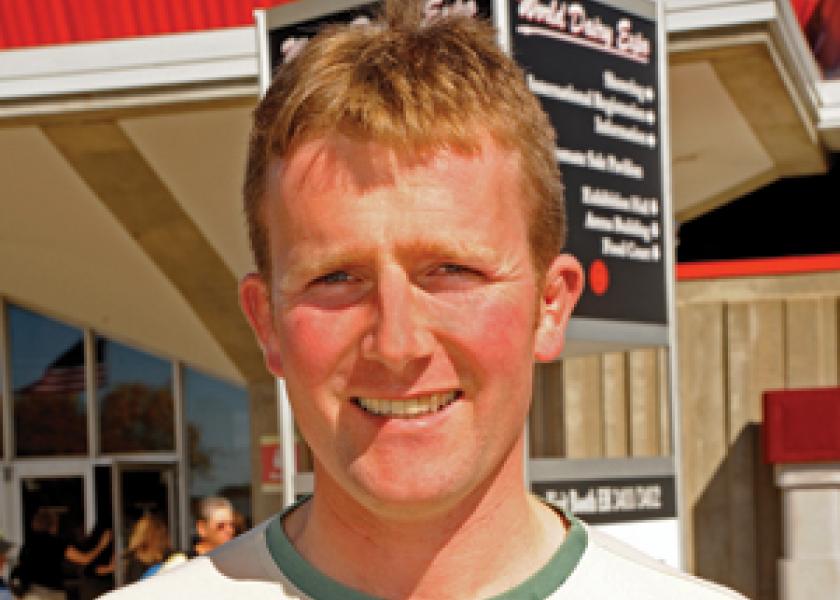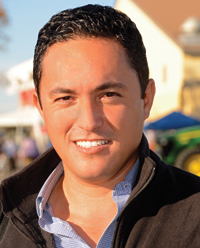Borders No Barrier

International visitors flock to
World Dairy Expo
Ireland
World Dairy Expo’s commercial trade show was a highlight of a weeklong tour of the U.S. dairy industry for Irish dairy producer Gerry Culligan in 2011. The tour was organized for 100 Irish dairy producers by the Kerry Group, a leading publicly held foods company with roots in Ireland.
"I came to obtain and glean things that I can bring back to my farm and improve the quality of my cows," Culligan says.
"There are so many great exhibits here," he says of the trade show. "Everywhere you turn, you find yourself saying, ‘That’s a really good idea, one that will work on my farm and make me more profitable.’"
Culligan milks 100 cows—mostly Holsteins and British Friesian cattle—in a 150-acre, pasture-based, spring calving operation in County Clare on Ireland’s west coast. The production average for the herd is currently 12,000 lb. per cow per year. He wants to increase that by 30% or more by 2020.
"Ireland is going to be doing away with its quota system in 2015, and that’s going to bring about a situation where milk production ratchets up very rapidly over the next five years. We’ll have to be ready."
Reaching his production target will require Culligan to focus more attention on his breeding program. "The big thing in Ireland right now is the Economic Breeding Index, where cows and bulls are rated on a variety of factors like repeat breeding, feet and udder quality, ease of calving and so forth," he says.
"There are so many genetics companies at Expo. I had the chance to talk to some very knowledgeable representatives about similar kinds of systems being used in America."
Improving his nutrition program is another of Culligan’s goals. "I wanted to find out more about feeding concentrates to increase solids and protein in milk. The challenge always is to come up with just the right mix. With so many different companies on the grounds, I was able to get a lot of good information in a relatively short period of time."
Mexico
Mexican dairy producer Oscar Terrazas made his first trip to World Dairy Expo in 2011. "I came here because I heard it was the biggest dairy event in the world," he says. "I wanted to see it for myself."
Terrazas milks 160 Holstein cows in a drylot dairying setup near Chihuahua, Mexico. The production average for the herd is 65 lb. per cow per day.
The expansive trade show at Expo made a lasting impression on Terrazas. "There are so many companies gathered in one place," he says. "It is great to be able to come and see so many new techniques and technologies.
"You get ideas on how you can do things better on your dairy in the future. Just as important, when you walk around and see everything here, you also think about all of the things you are already doing well."
 |
| Dairy technology and elite genetics were key attractions for Mexican dairy producer Oscar Terrazas. |
Along with the farm machinery on display at Expo’s Outdoor Trade Mall, Terrazas says, a system for teat dipping and several robotic milking system displays caught his attention. "We’re always looking for ways to improve our milking procedures," he says. "The robots were very interesting. Some of them seem a little slow now. But they are only going to get better and better."Terrazas also took in several breed shows during his Expo visit. "The cattle you see during theseshows are amazing," he says. "They are the best in the world. Watching the shows makes you think about what you can do to improve your own breeding program. You also get a chance to talk to the breeders and learn from them."
His bottom line after spending three days at Expo: "It was very impressive. We have cattle shows at home, but nothing on this scale. I’ll definitely be coming back."







